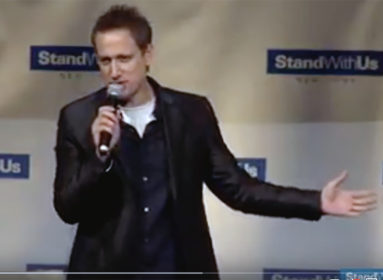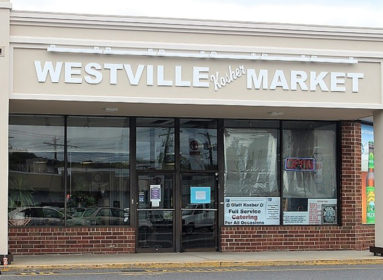NEW HAVEN – Prof. Robert Brody earned a PhD in mathematics from Harvard before switching fields and getting a doctorate in Talmud from Hebrew University of Jerusalem.
Since 1983, he has taught Talmudic and Rabbinic literature at Hebrew University, spending sabbaticals at Cambridge and Harvard. He is currently spending a year teaching at Yale.
As a scholar and professor of Talmudic and Rabbinic literature, Brody first encountered the ancient Jewish texts that had been stored for centuries in a medieval Cairo synagogue in 1987, during his time at Cambridge University.
The traditional storeroom for such texts is called a “Geniza” (or Genizah), the Hebrew word for “depository.” In his current work with the Geniza holdings, there is a connection between his two academic paths: “It feels a lot like you’re doing an incredibly complex jigsaw puzzle,” he says. “If you have a fondness for puzzles, it’s a wonderful field to be in.”
Brody will be among 40 educators from throughout Fairfield County to present at Taste of Honey, the annual adult learning event sponsored by the Jewish Federation of Greater New Haven on Saturday, Jan. 28 at the JCC of Greater New Haven.
The Cairo Geniza is a collection of more than 200,000 fragments of Jewish texts dating from the 11th through 19th centuries, many of which were stored in the loft of the ancient Ben Ezra Synagogue in Fustat, southwest of modern-day Cairo. These manuscripts outline a 1,000-year continuum of Middle Eastern history and comprise the largest and most diverse collection of medieval manuscripts in the world.
The texts are written in Hebrew, Arabic, Judeo-Arabic, and Aramaic and are mostly on vellum and paper, but also on papyrus and cloth. They represent every aspect of scientific Hebrew and Jewish studies in the Middle Ages.
Scholars of Talmudic and Midrashic interpretation, liturgical and poetic literature, and the evolution of Jewish religious law have greatly benefited from the documents discovered in the Geniza.
The collection also paints a detailed portrait of the economic and cultural life of the North African and eastern Mediterranean regions, especially during the 10th to 13th centuries. Documents describe the relations between the members of the three major religions of the time – Judaism, Christianity, and Islam – and the vital role the Jews played in the economic and cultural life of the medieval Middle East. Among the documents are community notes, leases, marriage contracts, and private letters, as well as legal and financial items.
The majority of the Geniza documents are held at Cambridge University Library and at the Jewish Theological Seminary in New York. Smaller collections are housed in university library collections around the world, including London, Oxford, Manchester, Paris, Geneva, Vienna, Budapest, St Petersburg, New York, Philadelphia, Washington, D.C., and Jerusalem; some are housed in private collections. The Friedberg Geniza Project (www.genizah.org) is digitizing the entire corpus of manuscripts discovered in the Geniza, together with all relevant data, such as catalog entries, bibliographical references, translations, transcriptions and citations, and making it available online.
The “official” date ascribed to the modern discovery of the Geniza is 1897, Brody says, when thousands of fragments and documents were relocated to Cambridge University by Dr. Solomon Schechter, then a reader in Talmudic studies at the institution.
“Cairo was uniquely gifted because it was an extremely important center of the Jewish world at the time,” Brody says. “Not only for its own community, but also as a crossroads through which correspondence passed and other kinds of things made their way from Spain, North Africa, Eretz Yisrael, and Babylonia. In addition, the climate is such that things survived much better than almost anyplace else.”
“Pieces from the Geniza began circulating in the antiquities market in the second half of the 19th century, without their provenance being publicly known,” Brody says. “Solomon Schechter got to it on the track of those fragments in 1897 and discovered that the source was this one synagogue in Cairo. He got permission to take what was still there and ship it to Cambridge.”
According to Brody, Geniza research has been pursued by many people in many scholarly fields since its discovery. “But it’s been haphazard and without much coordination,” he says. “So there’s a great deal that still needs to be done. The Geniza contains a jumble of material of many different types and you need experts from many different fields to work with it, and there are things that cross borders and require cooperation.”
Currently, Brody is studying and identifying thousands of previously unpublished fragments, including the halachic writings of Sa’adiah Gaon, a prominent rabbi, Jewish philosopher, and scholar of the early Middle Ages.
There have been some dramatic discoveries in the Geniza’s holdings, Brody says, but scholars believe that the contents are sufficiently well-known to preclude further extraordinary finds. The next frontier for Jewish scholars may lie in Afghanistan, where a cave full of thousand-year-old scrolls was recently discovered along the ancient Silk Route in Samangan province.
“A Taste of Honey:” Saturday-Sunday, Jan. 28-29, JCC of Greater New Haven, 360 Amity Road, Woodbridge | Registration: www.jccnh.org / (203) 387-2522







 Southern New England Jewish Ledger
Southern New England Jewish Ledger















